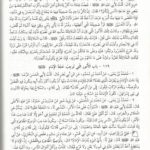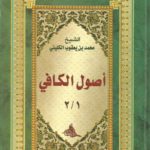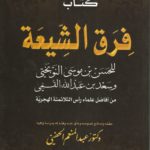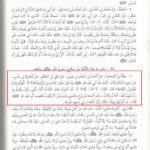Identifying the Infallible Imam
Dear Convert to Shiasm (and Shias that have been born into their sect but are open-minded enough to examine it),
Due to some error in judgment from your part, you have made the grave mistake into falling for polemical arguments in the form of Hadith Al-Manzilah, Ghadeer, and Fadak, and you have made the decision to accept Shiasm. You claim that you are thorough in your research, but you will have to admit that you truly only accepted Twelver Shiasm because the majority of Shias today are Twelvers.
You seem to be unaware that the acceptance of the “Twelve” has only become a “given” after Twelverism spread and became the predominant Shia sect. However, is predominance enough evidence for you?
For the intelligent Shia reader we have compiled the actual list of evidences/conditions for the Imamate as per the instructions of the Imams themselves. The list is based on Al-Kulayni’s chapter in Al-Kafi entitled: Bab Al-Umoor alati Tujibu Hujjata Al-Imam (alayhim al-salam) 1/170-171.

 The chapter consists of seven narrations, which are from Al-Baqir, Al-Sadiq, and Al-Redha. From these, Al-Majlisi graded the first five as reliable. The signs included are: The next Imam 1) is the eldest from among his brothers, 2) is honorable, 3) received a clear appointment from his predecessor, 4) has the weapon of the Prophet – peace be upon him – , 5) is the person who has the most rights to the previous Imam, 6) cannot be accused of lying, stealing, or fornication, 7) is of pure birth, 8) is brought up well, 9) and does not play around.
The chapter consists of seven narrations, which are from Al-Baqir, Al-Sadiq, and Al-Redha. From these, Al-Majlisi graded the first five as reliable. The signs included are: The next Imam 1) is the eldest from among his brothers, 2) is honorable, 3) received a clear appointment from his predecessor, 4) has the weapon of the Prophet – peace be upon him – , 5) is the person who has the most rights to the previous Imam, 6) cannot be accused of lying, stealing, or fornication, 7) is of pure birth, 8) is brought up well, 9) and does not play around.
From these narrations, we will only be examining exclusive signs. We will be ignoring subjective/vague “signs” since they are shared by millions of people (i.e. being honorable, brought up well, etc.)
It is important to note that the failure of the alleged Imam to display these signs nullifies their status as Imams.
- Eldest from Among the Brothers
- Received a Clear Appointment from His Predecessor
- The Keeper of the Weapon (Thu Al-Fiqar)
- The Imam Cannot be accused
- Ultimate Proof against the Belief that All Twelve were Known
- Conclusion
Eldest from Among the Brothers
 The sign of being the eldest from among the brothers led to great confusion a few decades after Al-Redha passed away. The reason being that the 11th Imam is not the eldest from among his siblings, rather, his brother; Mohammad Abu Ja’afar was the eldest. Al-Nawbakhti states in his Firaq Al-Shia (p. 96) that a schism was created among the followers of Al-Hadi. Not only was Mohammad the eldest, but his followers claimed that they heard his father appoint him as the next Imam. When news arrived of his death, they denied it, and claimed that he was the Mahdi, hence, rejecting the conc ept that the Imams need to be Twelve. This group was known as Al-Mohammadiyyah.
The sign of being the eldest from among the brothers led to great confusion a few decades after Al-Redha passed away. The reason being that the 11th Imam is not the eldest from among his siblings, rather, his brother; Mohammad Abu Ja’afar was the eldest. Al-Nawbakhti states in his Firaq Al-Shia (p. 96) that a schism was created among the followers of Al-Hadi. Not only was Mohammad the eldest, but his followers claimed that they heard his father appoint him as the next Imam. When news arrived of his death, they denied it, and claimed that he was the Mahdi, hence, rejecting the conc ept that the Imams need to be Twelve. This group was known as Al-Mohammadiyyah.
Al-Tusi narrates in his Kitab Al-Ghaybah (p. 82-83) that Abu Hashim Al-Ja’afari was with Al-Hadi when his son Mohammad Abu Ja’afar died. He states that Mohammad Abu Ja’afar died after being appointed by Al-Hadi, though, Allah then revealed that Al-Askari is to be the Imam.
This is explicit proof of the inaccuracy of Al-Redha’s sign/prophecy or that Al-Hasan Al-Askari is a false Imam.
Received a Clear Appointment from His Predecessor
In the list that has been provided, there has not been a weaker piece of evidence than the “clear appointment”. Al-Redha states in Al-Kafi 1/170 that if one were to enter a town and ask, “Who was appointed as successor,” he would be told. This suggests that the appointment was so clear, that the news was widely available.
However, anyone who knows history could clearly see that this never occurred. Rather, ambiguity surrounded the identity of the Imams. Not only were the signs ambiguous, but there was a lot of disunity due to the lack of any clear appointments within Shia circles themselves. It goes without saying that none of these appointments can be found within Sunni texts.
From Firaq Al-Shia by Al-Nawbakhti (p. 92-109), we find that upon the death of Al-Redha, his followers split into two sects. One followed his brother; Ahmad bin Musa, while another stopped believing in any other Imams, and started to believe that Musa Al-Kathim was the Mahdi. Those are known as the Waqifah. As for those that followed Al-Jawad, some of them followed his son Musa bin Mohammad before accepted Ali Al-Hadi. Not too long after, Ali Al-Hadi’s followers accepted his son Ja’afar bin Ali as the next Imam instead of Al-Hasan Al-Askari. Soon after, after the death of Al-Hasan Al-Askari, the Shias split into thirteen different sects.
Note: We have only briefly discussed the confusion after Al-Redha without delving into the confusing period of the earlier Imams.
 It should also be known that not only was there a lack of a clear appointment, but the Imam would at times deny that he was the Imam. In the authentic tradition in Al-Kafi 1/138, Ja’afar Al-Sadiq was approached by two Zaydi men that asked if it was mandatory for them to follow him. He explicitly denied that he is to be followed.
It should also be known that not only was there a lack of a clear appointment, but the Imam would at times deny that he was the Imam. In the authentic tradition in Al-Kafi 1/138, Ja’afar Al-Sadiq was approached by two Zaydi men that asked if it was mandatory for them to follow him. He explicitly denied that he is to be followed.
The Keeper of the Weapon
“The Weapon” which is mentioned in the hadith is understood to be referring to Thu Al-Fiqar. The argument that can be made against this “sign” is the lack of evidence thereof. There are not enough evidences in the narrations to even suggest that each of the Imams had Thu Al-Fiqar. Only through circular reasoning could someone arrive at this conclusion with the pre-conception of their Imamate being established in the first place.
The usage of this “sign” as evidence is also problematic since the narrations don’t even include the companions of the Imams ever seeing Thu Al-Fiqar. With this in mind, how the sword even be used as proof for Imamate?
Surprisingly, Al-Asma’ee relates that he did see Thu Al-Fiqar with Haroon Al-Rasheed. This narration, which has no political motivation, can be found in Tareekh Al-Tabari 4/1593.
The Imam Cannot be Accused
 The narration by Ja’afar Al-Sadiq states that the Imams cannot be accused of lying, stealing, or fornication. This “sign” is flawed since Ja’afar Al-Sadiq was himself accused by the Batris and the followers of Sulaiman bin Jareer of lying. Those who were once companions of Ja’afar Al-Sadiq eventually adopted the views of the accusers. See Al-Nawbakhti p. 76-77.
The narration by Ja’afar Al-Sadiq states that the Imams cannot be accused of lying, stealing, or fornication. This “sign” is flawed since Ja’afar Al-Sadiq was himself accused by the Batris and the followers of Sulaiman bin Jareer of lying. Those who were once companions of Ja’afar Al-Sadiq eventually adopted the views of the accusers. See Al-Nawbakhti p. 76-77.
Moreover, the Prophet – peace be upon him – was accused of lying by Quraish (see Surat Saad: 1-4), so it simply makes no sense that the Imams could not being accused due to some alleged divine protection against accusations.
Ultimate Proof against the Belief that All Twelve were Known
The very fact that the Imams are being asked for signs, instead of the names of their successors, is clear proof that they were never told of their identities. The first narration alone is through Ibn Abi Nasr, who is one of Al-Redha’s closest companions. (See Fihrist Al-Tusi p. 47) More importantly, the Imams do not respond to them by listing out the names of the remaining Imams, instead they provided them with “signs”. So, Al-Redha, instead of saying, “Mohammad, then Ali, then Al-Hasan, then finally Mohammad,” provided the fragile “signs” that clearly demonstrate the falsehood of the Twelver belief.
One should also keep in mind that some of the schisms mentioned above, like the Waqifah and Al-Mohammadiyyah, do not follow twelve Imams, but chose a different number, which suggests that the belief that the Imams are twelve in number is one that was not held by several early Shia sects.
Conclusion
In conclusion, there is no way for one to determine the identities of the Imams. Twelvers are captives of their own conjecture after accepting Shiasm. If modern Shias were more thorough in their search for truth, they would not jump on the Twelver bandwagon. Instead, they would carefully examine the evidences for each of the Imams…
…before ultimately rejecting them due to the lack of evidence for their Imamate.


Need more practice keep it up.
Can you arrange a debate with the Shia? They have already called All the Sunnis for the debate so I hope you will answer their request
Please invite the Shia to forum.twelvershia.net and they will be debated on their favorite topics. Easy enough?